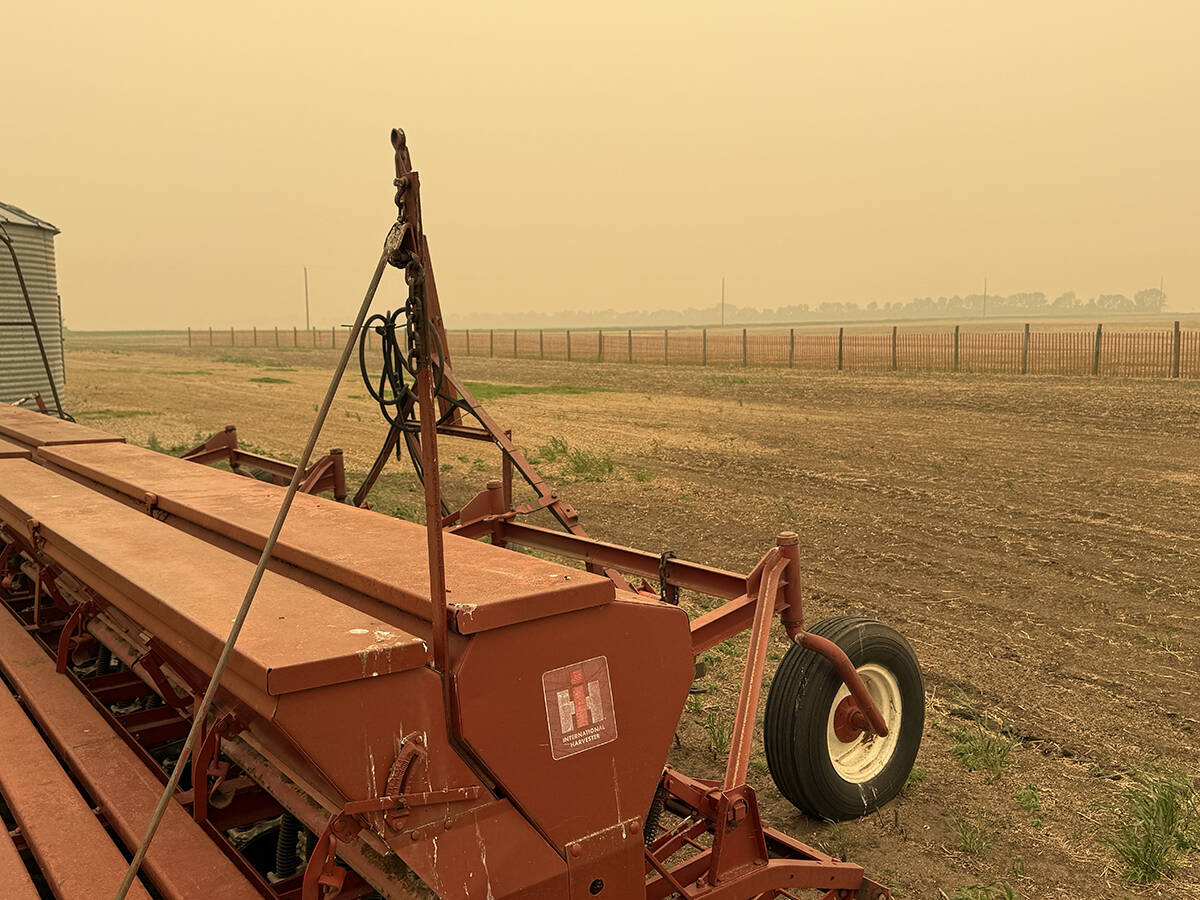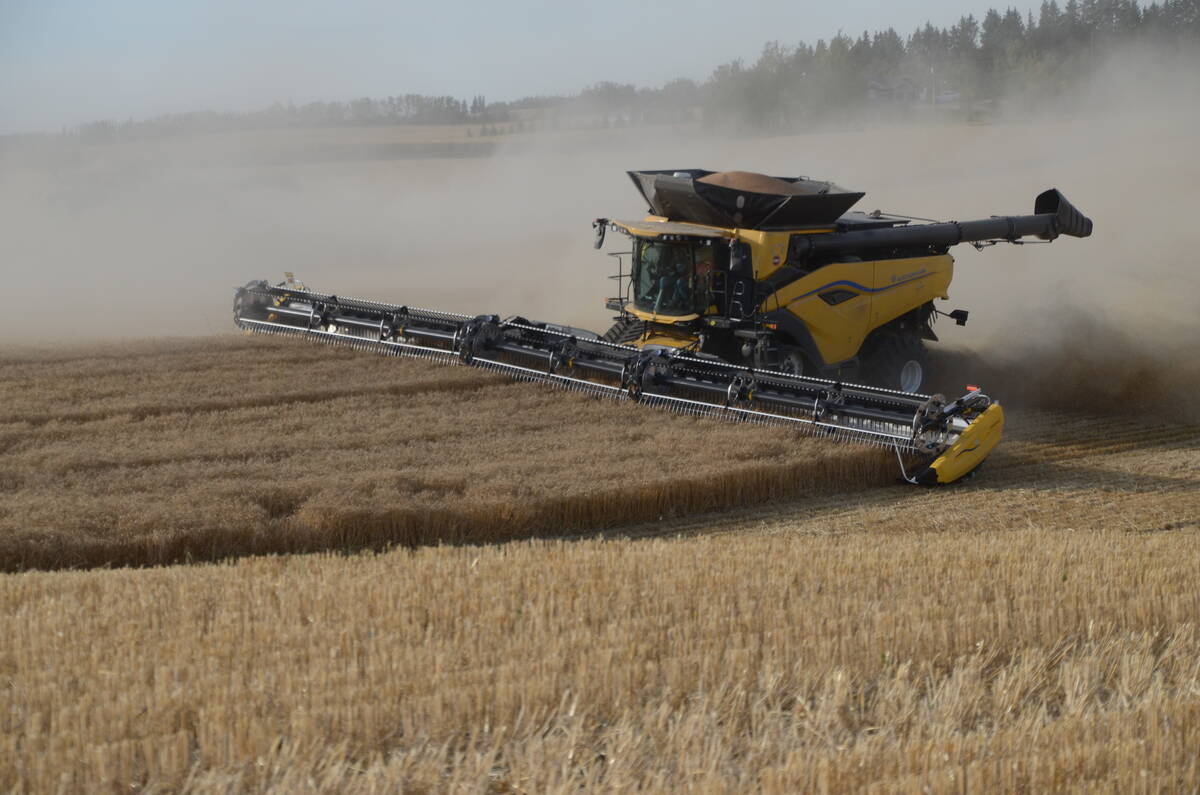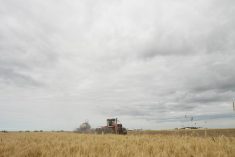WINNIPEG — Equipment costs are through the roof. Fertilizer is persistently pricey. The cost of seed is not going down.
With chronically high prices for crop inputs and machinery, and softer grain prices in 2025, some Canadian farmers are struggling financially. Most likely, it’s younger producers with large debts to manage on land and farm equipment.
There are cases where individuals are under pressure, and certain regions where producers have suffered through years of poor yields, but grain farming in Canada is financially solid, says a Farm Credit Canada official.
Read Also

Wildfires have unexpected upside this year
One farmer feels smoke from nearby wildfires shrouded the July skies and protected his crop from the sun’s burning rays, resulting in more seeds per pod and more pods per plant.
“I’m not an economist … but what I can do is look at FCC’s portfolio,” said Perry Wilson, a senior vice-president of ag production with the crown corporation.
“From my vantage point, in terms of the dollars that we’re putting out to the industry, the stability of our portfolio, the activity that I see in lending, the industry seems to be stable.”
FCC is the largest farm and food industry lender in Canada, providing financing and other services to 103,781 customers, its website says.
Wilson emphasized that there are cases where grain farmers are under financial strain, but it’s not a widespread concern.
“Are farmers stretched? Am I seeing a trend? The answer to that would also be ‘no,’ ” said Wilson, who lives near London, Ont.
That message runs counter to a 2025 narrative that says grain farmers are in peril. There have been dozens of media reports on China’s 75 per cent tariffs on canola seed imports from Canada and the related impact on farm profitability.
Derek Brewin, an agricultural economist at the University of Manitoba, told CBC News that farmers could lose money on their canola crops in 2025.
“They’re in a tight situation. The (crop) that has been paying the bills is barely making any money, and so they might be looking at alternatives in the spring.”
Also, there have been anecdotal reports that banks are reluctant to finance grain farming, making it difficult for young producers to obtain the necessary cash flow and cover their input costs for 2025 or the 2026 growing season.
Some of those producers are choosing to sell some of their land or get out of grain farming entirely, the anecdotes suggest.
Such situations may exist, but the broader picture is brighter and financing is available for grain producers, Wilson said.
“Are banks backing off at bit? We don’t see that happening,” he said.
“I would say there should be lots of (financial) options … not only traditional financial institutions, but things like fintech.”
There are locations on the Prairies where farmers have been dealing with dry weather, such as southwestern Saskatchewan and Manitoba’s Interlake, and crop production will be down in those regions, Wilson added.
Those farmers may need financial help, but FCC has programs in place.
“We do have a national customer support program…. We’ll help them out…. deferred principal payments, that sort of thing.”
That said, there are many regions with above average or strong crop yields this year.
“Overall, things are looking pretty good across the country,” Wilson said.
Some producers OK, some not
Roy Arnott, a farm management expert with Manitoba Agriculture, has a different view of the situation. Some producers may have strong yields this fall, but others could have an average crop.
The bigger story is weak prices for grains and oilseeds, in combination with the high cost of producing crops, which affects all farmers.
“Everyone is suffering from prices. The prices being offered right now in the pit are not that good,” Arnott said.
“The real story in all of this is, we have a relatively high cost crop coming into the bin.”
Seed, fertilizer and machinery prices will likely remain elevated in 2026, so those pressures will persist.
“Next year is looking much the same … so we’ve got a high cost environment, moderate prices … we’ve got a cash flow squeeze,” Arnott said.
“Are farmers going to be profitable at the current levels? Well, some are and some aren’t.”
Kevin Hursh, a Western Producer columnist and farmer in southwestern Saskatchewan, wrote about this low price/high cost squeeze in September. He wonders if grain farming economics have reached a turning point, where it will become difficult to make money from growing crops on the Prairies.
Wilson is more hopeful.
He’s worked at FCC for 30 years and has witnessed the ups and downs of farming. Right now, there are political risks from the whims of U.S. president Donald Trump and what China may do next week.
Nonetheless, young people are succeeding in grain production and the future looks bright for both mature and younger farmers in Canada, he said.
“We believe the industry is healthy. We believe there’s a ton of opportunity for the industry, moving forward.”
















